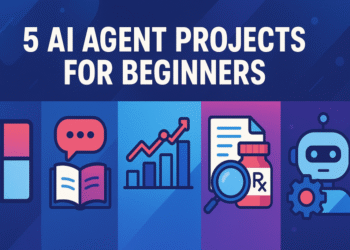As a CMO or Marketing Director, you’ll know that companies tend to get more complicated as they grow. You may have inherited a chaotic brand portfolio, one that has grown arms and legs from multiple acquisitions, innovations, or the isolated actions of siloed business units. There may still be legacy names in use and parts of the business that have never been fully integrated. Now it’s your job to bring clarity, drive growth, and make sense of the sprawl through brand architecture.
But here’s the catch: brand architecture is a strategic tool, not just a structural decision. And, although marketing leaders are often in the best position to drive, an effective brand architecture project is truly a team play with leadership at the helm.
Brand Models Don’t Live In The Real World
Here’s the real trouble with brand architecture: it’s not just about choosing a House of Brands, Branded House, or hybrid model. It’s about using these tools to have tough, strategic conversations at the intersection of business and marketing strategies.
Brand architecture models are theoretical; they are simply propositions that help you work out your strategic perspective through deep thinking. They are not off-the-shelf templates or a once-and-done exercise. These conversations can be tricky, often highlighting the grey areas, gaps, and indecisiveness.
This article is part of Branding Strategy Insider’s newsletter. You can sign up here to get thought pieces like this sent to your inbox.
How You Can Drive The Conversation
Too often, brand architecture is misunderstood as something other than what it is. I’ve seen many CEOs or senior leaders mistake brand architecture for internal structure and use reporting lines, business units, leadership delineation, or legal structures to drive the structure of their brand portfolio. The truth is that brand architecture should be outward-looking, not inward. If you’re trying to solve an internal problem with brand architecture, consider whether a different approach is needed.
If a brand architecture project brief is approved, they are often limited to adjusting naming conventions, redesigning logos, or managing trademarks. While these are all important elements, they are not THE conversation you need to have.
The conversation you need to have is about the purpose each of your brands serves, both individually and collectively. From your perspective, you can position the business through the lens of the customer, but you also know that, as marketers, we can persuade, influence, and direct; however, the power always lies with the customer. They decide what to think about a brand, not you. And if your customers are in any way confused about what you do or offer, they aren’t saving your brand as a shortcut in their already busy minds.
“A brand is not what you say it is, it’s what they say it is.” ~ Marty Neumeier
Two Perspectives To Go From Tactical To Strategic
To move the conversation about brand architecture from tactical (or non-existent) to strategic, you need to guide your organisation’s leaders through two essential perspectives:
Lens #1 – The Business
A good look through this lens needs the input and direction of your CEO so everyone can fully understand the strategic growth plan, acquisition roadmap, and market ambitions. However, remember that reworking your brand architecture should not be focused solely on internal reorganization. It’s about where you are headed and where your priorities lie, and you have investors who may need to be involved in this conversation, too. Anything that fundamentally shifts how you go to market needs to be on the table for discussion.
Using this lens involves asking, in the context of our strategic business plan, whether our brand portfolio makes sense to the markets we serve. It is clear and straightforward what we offer to different market segments? Are we in competition with ourselves? Have we overcomplicated our portfolio because we haven’t fully focused on integrating new acquisitions? Do we need to retire any of our older brands or even new ones that aren’t delivering? In short, how do we deliver against our business goals while best serving customers?
I worked with a marketing director who had inherited an extensive brand portfolio of 30+ brands. She knew that rationalization was needed, but she also knew the business was stuck in its ways, steadfast, and traditional. The acquisitions kept coming, and the business kept growing, but she was struggling to manage all these tiny local brands with a small marketing team and an undefined future growth plan. She persuaded her leadership that their position was unsustainable, the brand portfolio needed to be rationalized and she needed more customer data to inform the best way forward.
Lens #2 – The Customer
As a marketing leader, this is your domain, and where you can help the rest of the leadership team focus on the voice of the customer. Does the way your brands show up help or hinder customer decision-making? Are you building trust or creating noise? Is there clarity or confusion? Why do customers choose one brand over another? What relationships are there between brands in the portfolio? Where is there overlap?
Often, this lens reveals uncomfortable truths, like how little recent insight the organization has gathered on its customers. This is your opportunity to reestablish the value of customer research in strategic planning and secure additional budget to collect data before final decisions are made. It may also throw light on the fact that there is not enough resource to manage the portfolio as it is, internal constraints will have a bearing on how you can deliver against your ambitions. It’s about uncovering the priorities that deliver financial benefits while keeping customers happy.
Brand architecture had finally made its way to the boardroom agenda for another client. Still, the CEO was in favor of relying on sub-divisional leadership to make key brand decisions because they knew their markets best. Unfortunately, the subdivisions were so devolved, and they were making very isolated decisions. One division felt that a branded house was appropriate, while another relied on a House of Brands due to its fast-paced acquisition pipeline. Neither really wanted to budge on their approach but, in both cases, marketing teams were being left to pick up the pieces without clarity or budget. When they finally completed some customer research it shone a whole new light on where the real brand equity was a sense of clarity began to be shared and the marketing team breathed a sign of relief.
How Brand Architecture Can Help
If this kind of project sounds tricky, you’d be right, but it’s a fruitful one nonetheless. When growth strategies are informed by customer insight, they provide marketing teams with the platform to create exceptional campaigns. In a growing organization, brand architecture is not a one-time exercise, but rather something that needs to be revisited each time there is a significant shift. Use it to help you ask the tough questions because great things can happen when a brand architecture is used with intention.
I worked with a group CEO who led a brand architecture project to create a connected proposition from a disparate group of loosely connected divisions within a holding company. Not only did this align with her strategic plan for growing customer value across the group, but it also helped her position the group for sale as a whole.
I’ve also worked with a spin-off company that became laser-focused on an innovative product line while leveraging the right elements of their group brand heritage to connect with potential customers. Their early and intentional decisions regarding brand architecture helped them enter this new market with credibility and quickly ramp up their operations.
Your Playbook
So, how do you lead brand architecture like the strategic project it is?
Final Thought
The trouble with brand architecture isn’t the complexity of the models. It’s the tendency to avoid the thinking that provides true insight. Brand models are not a quick choice; they are a tool for discovery, and there’s no substitute for this foundational work.
You already know that a brand is more than just a logo. Now’s the time to prove it’s a driver of long-term value. As the CMO or Marketing Director, you’re ideally placed to lead the conversation, to connect brand clarity with business growth and customer loyalty.
Contributed to Branding Strategy Insider by Sonja Jones, Founder, Bread + Jam
The Blake Project helps organizations transform complex brand architecture problems into marketplace advantages. Please email us to learn how we can help you compete differently.
Branding Strategy Insider is a service of The Blake Project: A strategic brand consultancy specializing in Brand Research, Brand Strategy, Brand Growth and Brand Education
FREE Publications And Resources For Marketers
Post Views: 57


















